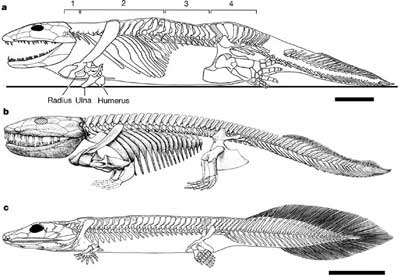The conflict between the theory of evolution and creationism has been actively debated for the past century. The warfare in the court system has largely quieted down, but the battle in the print media still rages. A large section of Christian books are devoted to the topic of the origin of life. If you are a regular churchgoer, you are likely to hear sermons on the topic of why evolution is false.
Being a dedicated church member for two decades, I’ve concluded that the church’s arguments against evolution consist of the following three aspects:
1) Science is limited especially when it comes to the spiritual domain where God is in control. Scientists are arrogant and often draw inaccurate conclusions to advance their own agenda.
I think I have addressed this opposition in my previous blog www.letgoblog.com/the-power-of-science.
2) “Micro-evolution” is plausible, but “macro-evolution” isn’t supported by modern scientific evidence.
In the first half of “The Origin of Species” by Charles Darwin, he cited evidence for “micro-evolution,” or changes on a small level between species. For example, there are many species of fish, each evolved through natural selection to adapt to its environment, but remained fish. From this observation, Darwin then extrapolated his explanation for the origin of life forms from a common ancestor, or “macro-evolution.” He used the evidence from the first half of his book on micro-evolution to suggest that the same mechanism could produce all life forms. Christians reject Darwin’s theory feverishly by questioning, “Humans are created in God’s image with His glory and spirit, and therefore how can we be descents of apes?”
Evolution theory actually suggests that humans didn’t evolve from apes; rather we and apes evolved from a common ancestor. The relationship is more like cousins than parent-child. Evolution only occurs when it is necessary. Some apes evolved into man because either they moved to a new environment or their existing environment changed, making evolution necessary for survival. So, the apes who needed to adapt to their new environment through evolution to survive either did so or were wiped out (apparently, they changed, creating the human race), or stayed in a friendly environment, making evolution unnecessary and therefore, nonexistent (the apes in these conditions remained apes). Technically, humans are apes*.
3) Missing links prove Darwin’s extrapolations are farfetched and unscientific.
Charles Sullivan and Cameron Mcpherson explained in the May 2005 issue of Skeptical Inquirer that when we say “missing link,” we invoke a metaphorical chain, a set of links that stretch far back in time. Each link represents a single species, a single variety of life. Because each link is connected to two other links, each is intimately connected to past and future forms. Break one link, and the pieces of the chain can be separated, and relationships lost. But find a lost link, and you can rebuild the chain, reconnect separated lengths. One potent reason for the attractiveness of this metaphor is that it allows for the drama of the quest, the search for that elusive missing link.
But since species are not fixed (they change through time), it can be difficult to be sure where one species ends and another begins. For these reasons, many modern biologists prefer a continuum metaphor, in which shades of one life form grade into another. Life is not arranged as links, but as shades. The metaphorical chain is far less substantial than it sounds.
However our idea that there can even be such a thing as a “missing link” was created in an era of biological research which is long gone. It’s a concept that is no longer valid in our current understanding of the nature of life and evolution — but, as is so often the case with appealing concepts, it continues to live on, to structure people’s assumptions, and to influence how they think about evolution.
If you have to have proof, there are plenty. Going back 20 years ago, only two relevant fossils were discovered: one of a fish and one of a tetrapod. But the answer to the question “how did the fish evolve into the tetrapod?” was left to pure speculation. Today scientists have uncovered fossils that allow a much more detailed perspective on how did our first ancestors that ventured out of the water evolve. It seems that fish grew legs long before they got out of the water. Fish not only developed their legs while still being in water but they also developed the capacity of breathing air while still in water**.
In 2009 scientists unveiled a 47-million-year-old fossilized skeleton of a monkey as the missing link in human evolution.
Evolution has a wide range of applications in our modern lives. The flu shots we take every year are developed based on the principles of evolution. Evolution helps us to understand a problem that is a growing concern in the field of health-care today. Namely, antibiotic-resistant bacteria. Applied evolution is also a potent force in biomedical research. The application of evolution even jumps beyond biology. In computer science, genetic algorithms, that is, a programming technique that allows the program to consider a range of possible alternatives and then evaluate them all based on their relative fitness to the problem at hand, is becoming more and more relevant***.
Based on all these solid evidence, the Vatican has admitted that Charles Darwin’s theory of evolution should not have been dismissed and claimed it is compatible with the Christian view of Creation. So at least for now, there seems to be a place for some Christians to accept both creationism and evolutionism. You need to do your own homework to reach your conclusions.
_______________________________________________________________________
* http://wiki.answers.com/Q/If_people_evolved_from_apes_why_are_there_still_apes
** http://news.softpedia.com/news/How-did-fish-grow-legs-15424.shtml
*** http://evolution-101.blogspot.com/2006/06/what-are-practical-applications-of.html
